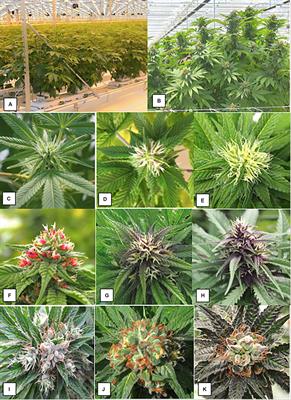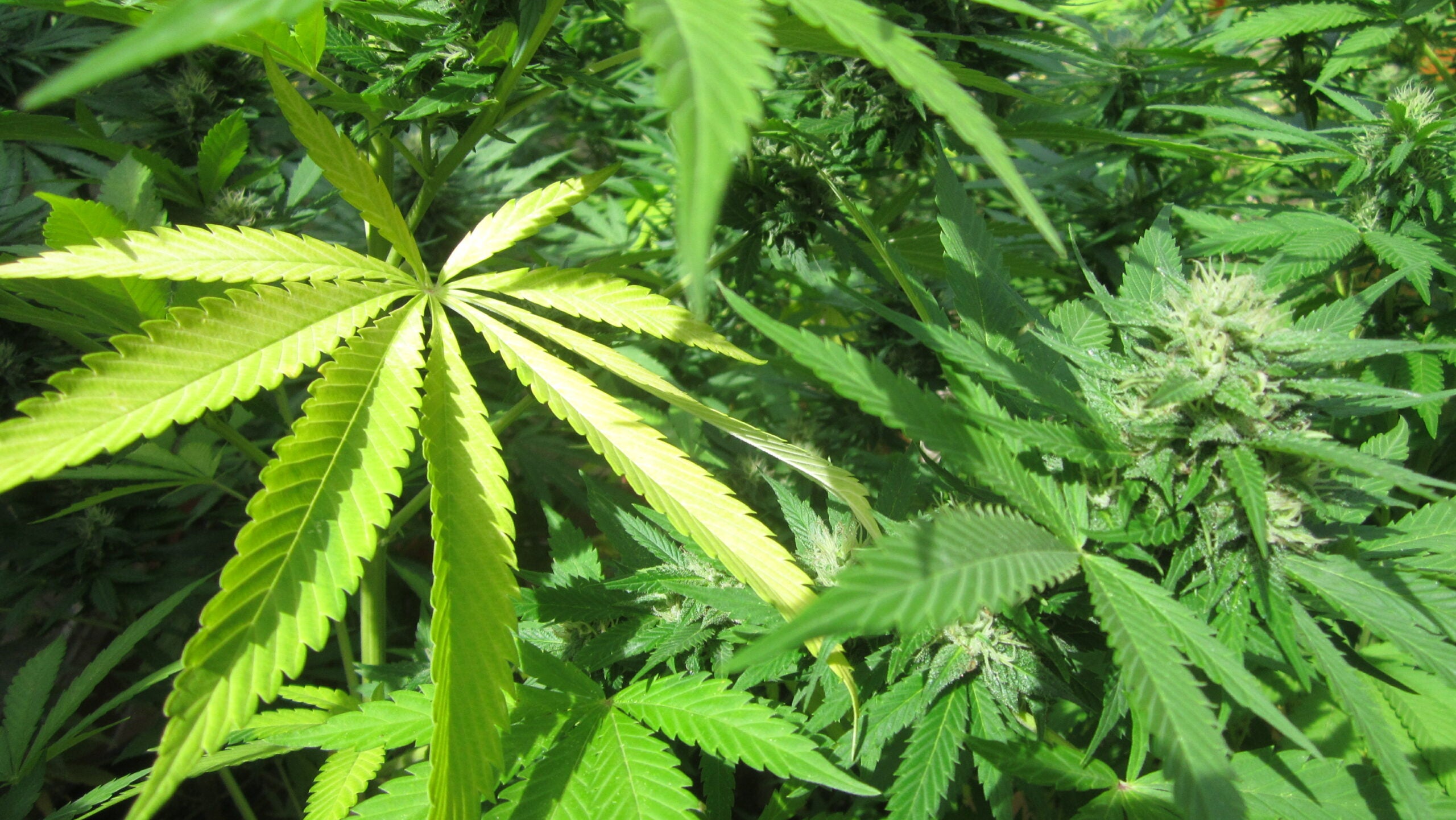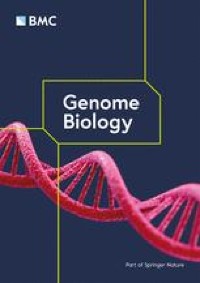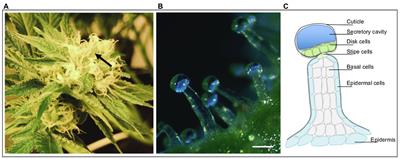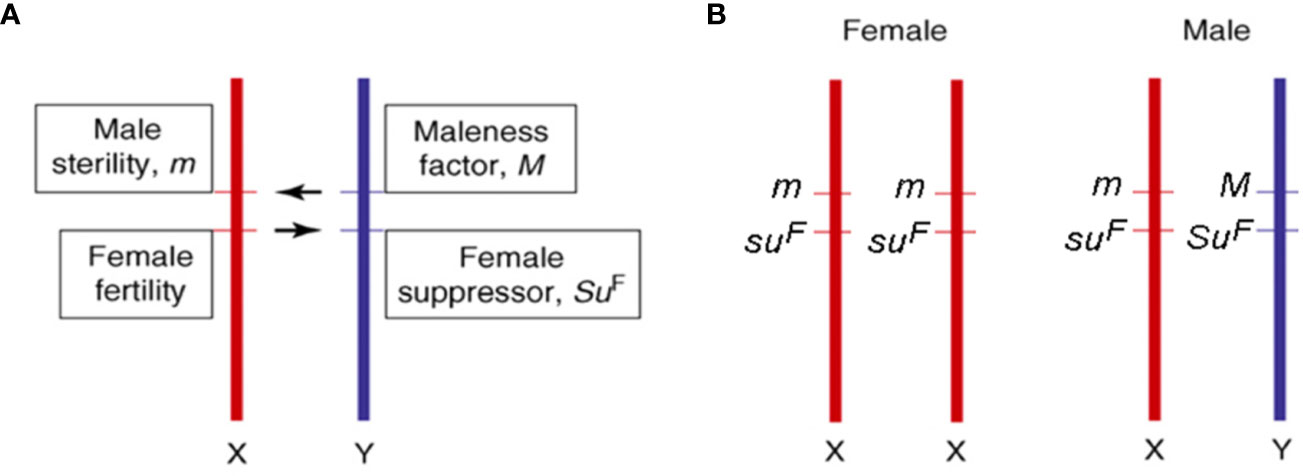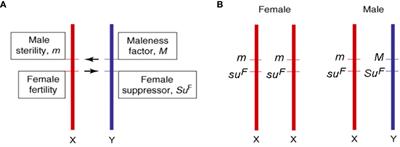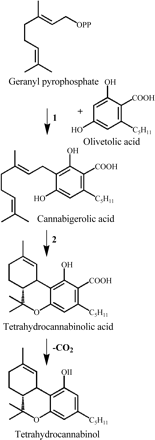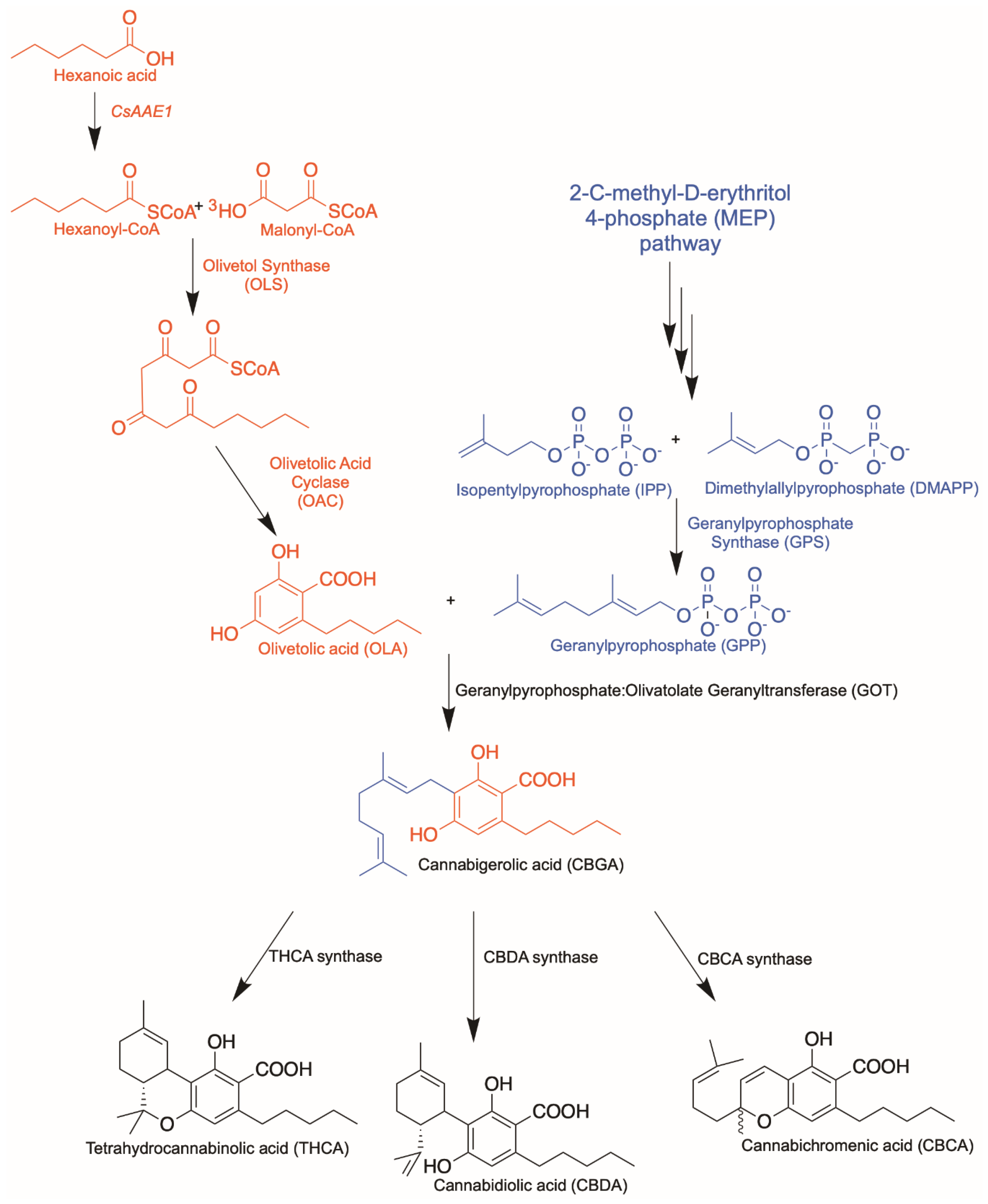acespicoli
Well-known member

Outbreeders pull harder in a parental tug-of-war

Proc Natl Acad Sci U S A. 2018 Nov 6; 115(45): 11354–11356.
Published online 2018 Oct 26. doi: 10.1073/pnas.1816187115
PMCID: PMC6233102
PMID: 30366950
Outbreeders pull harder in a parental tug-of-war
Yaniv Brandvaina and David Haigb,1Author information Copyright and License information Disclaimer
See the article "Intersexual conflict over seed size is stronger in more outcrossed populations of a mixed-mating plant" in volume 115 on page 11561.
This article has been corrected. See Proc Natl Acad Sci U S A. 2019 October 22; 116(43): 21947.
During development, seeds compete, directly or indirectly, for access to resources supplied by the maternal plant. This competition is expected to be more intense when embryos (and associated endosperms) are less related to each other because they are fertilized by less-related pollen (1). Imprinted genes of paternal origin in offspring tissues (embryos and endosperms) are predicted to engage in more intense competition for maternal resources than imprinted genes of maternal origin because offspring tissues share the same mother but may have different fathers (2, 3). Plant species vary tremendously in the extent to which they produce selfed siblings (the progeny of self-pollination), half-siblings, and full-siblings (the progeny of outcrossing). The “weak inbreeder/strong outbreeder” (WISO; pronounced “why so”) hypothesis predicts that this maternal–paternal conflict will escalate to higher levels as the degree of outcrossing increases (4). In PNAS, Raunsgard et al. (5) test this hypothesis using crosses among Mexican populations of Dalechampia scandens.The conflict over resource allocation in seeds largely takes place in the endosperm, an ephemeral organism that acquires nutrients from the diploid mother and passes them on to the diploid embryo. Endosperm is triploid in most flowering plants: two maternal genomes for each paternal genome (2m:1p). The antagonistic effects of maternal and paternal genomes on endosperm development are revealed in reciprocal crosses between diploids and their autotetraploids. When the seed parent is diploid, the resulting endosperm is tetraploid (2m:2p) and can be described as exhibiting “paternal excess.” When the seed parent is tetraploid, the resulting endosperm is pentaploid (4m:1p) and can be described as exhibiting “maternal excess.” In species in which the earliest phases of endosperm development occur without cell division, paternal excess is associated with prolonged proliferation of endosperm nuclei, with delayed or absent cellularization of endosperm. In contrast, maternal excess is associated with reduced proliferation of endosperm nuclei and precocious cellularization (2). Of particular interest, some interspecific crosses between diploid species exhibit features of maternal excess in one direction of the cross and paternal excess in the reciprocal cross despite triploid (2m:1p) endosperms in both directions of the cross. We have proposed that these hybridization barriers could be explained by differences in mating system between the two species, with genomes from the more outbred species having greater strength or “effective ploidy” (i.e., features of paternal excess were predicted when the pollen parent was more outbred, but features of maternal excess were predicted when the seed parent was more outbred). We found support for these predictions in a review of earlier literature (4).
Subsequent studies have provided further support for the WISO hypothesis. For example, a recent study by Lafon-Placette et al. (6) intercrossed three diploid species of Capsella and assigned effective ploidies to their genomes based on each genome’s effects in hybrid seeds. Capsella grandiflora (an obligate outcrosser) was assigned higher effective ploidy than Capsella rubella (a recent selfer), which, in turn, was assigned higher effective ploidy than Capsella orientalis (an ancient selfer). Endosperms from interspecific crosses exhibited symptoms of paternal excess when the pollen parent had higher effective ploidy but exhibited symptoms of maternal excess when the seed parent had higher effective ploidy. The maternal-excess seeds were very small and underwent precocious cellularization of endosperm, whereas the paternal-excess seeds did not undergo cellularization of endosperm and were shriveled. These results are broadly consistent with the WISO hypothesis, because effective ploidy decreases with an increased evolutionary history of selfing. However, the paternal-excess seeds were shriveled and failed to extract extra maternal resources. This failure can be ascribed to an imbalance in the effective ploidies of the maternal and paternal parents sufficiently great to be incompatible with seed development. One of the crosses that failed, between C. rubella as seed parent and C. grandiflora as pollen parent, succeeded when a tetraploid C. rubella was used as seed parent. Thus, an increase in actual ploidy of the self-fertilizing parent was able to correct the imbalance in effective ploidies at the diploid level.
Interspecific crosses test the WISO hypothesis in circumstances in which there has been substantial evolutionary divergence between the parents. It is also desirable to test the hypothesis in crosses in which the parents are more recently diverged and have more subtle differences in mating system. Raunsgard et al. (5) provide such a test in crosses between geographically separated populations of D. scandens, a vine with a mixed mating system. The relative frequency of outcrossing and selfing in Dalechampia varies geographically and is reflected in structural features of the inflorescence—in particular, the distance between male and female flowers (herkogamy). Raunsgard et al. (5) found that seed size tended to be larger when the pollen parent came from a population with a higher frequency of outcrossing but found that it was smaller in the reciprocal cross. They also found a stronger relationship between seed size and the difference between maternal and paternal herkogamy than between seed size and paternal herkogamy. This was interpreted as evidence in favor of a “tug-of-war” mechanism rather than a “recognition-avoidance” mechanism. Under the tug-of-war mechanism, seed size is determined by the quantitative balance between maternally expressed growth suppressors and paternally expressed growth enhancers, with levels of both suppressors and enhancers escalated in more-outcrossed populations. Under the recognition-avoidance mechanism, the expression of paternally expressed growth enhancers is elevated in more-outcrossed populations, but these are blocked by maternal countermeasures that are specific to each population. We think both mechanisms can be subsumed under the broader WISO hypothesis.
We know of two other studies that found an association between differences in seed size in reciprocal crosses and differences in mating system between the parental populations. Willi (7) intercrossed Arabidopsis lyrata from populations with different frequencies of selfing and found that seed size was larger when mothers from outcrossed populations were pollinated by fathers from selfing populations but was smaller when the parental roles were reversed. Similar data can be extracted from an old study of Leavenworthia by Lloyd (8), in which the difference in seed size in reciprocal crosses also increased as the difference in mating system between the parental populations increased (Fig. 1). Thus, studies in Dalechampia, Arabidopsis, and Leavenworthia provide evidence that variation in mating system within species can generate subtle incompatibilities between maternal and paternal genomes in seed development (6–8). An important direction for future research is to connect these phenotypic observations with mechanisms, including changes in the expression of imprinted genes.
[IMG alt="An external file that holds a picture, illustration, etc.
Object name is pnas.1816187115fig01.jpg"]https://www.ncbi.nlm.nih.gov/pmc/articles/PMC6233102/bin/pnas.1816187115fig01.jpg[/IMG]
Fig. 1.
Relationship between relative seed size and relative mating system in Leavenworthia (data from ref. 8). Relative seed size = log(seed weight) − log(maternal seed weight). Mating systems are classified as self-compatible (sc), weakly self-incompatible (wsi), and strongly self-incompatible (ssi). Relative mating systems are as follows (mother × father): −2 (ssi × sc), −1 (wsi × sc, ssi × wsi), 0 (ssi × ssi, sc × sc), 1 (sc × wsi, wsi × sci), and 2 (sc × ssi).
Most research comparing imprinted expression in species with different mating systems have used Capsella and Arabidopsis, two genera of Brassicaceae. In Capsella, the number of paternally expressed genes (PEGs) and their levels of expression were both higher in outcrossing C. grandiflora than in the self-fertilizing species, but the number and expression of levels of maternally expressed genes (MEGs) did not differ (6). Similarly, the number and expression of PEGs, but not MEGs, was elevated in outcrossing A. lyrata compared with self-fertilizing Arabidopsis thaliana (9). PEGs are also more frequently flanked by transposable elements (TEs) than are MEGs (10). Why PEGs appear more responsive to variation in the intensity of parental conflict, why PEGs are preferentially associated with TEs, and how this apparent one-sided molecular response results in seed phenotypes that are consistent with the tug-of-war model require further study.
There is substantial evidence of coevolution between TEs and imprinted gene expression, including genomic colocalization of TEs and PEGs (10) and the role of Polycomb group-mediated histone methylation in the control of both imprinted expression and transposition (11). Therefore, a more complete picture of the genomic effects of mating system on imprinted expression needs to take account of the distinctive selective forces acting on TEs. New mutations of TEs, at each and every location in the genome where a TE is inserted, are under selection to reduce rates of transposition. This includes selection on the TE sequence for the production of small interfering RNAs (siRNAs) that inhibit transposition. On the other hand, actively proliferating TEs are also under selection for their ability to transpose, because insertions at new sites select for elements that are still able to transpose. For a TE lineage to remain active, it must continually move to new sites faster than inactivating mutations occur at established sites (12). If a TE is differentially expressed in maternal and paternal germ tracks, then paternally expressed transcripts are subject to the same selective forces as PEGs, and maternally expressed transcripts are subject to the same selective forces as MEGs. By this process, TEs may have been coopted into roles in the control of nutrient transfer in seeds.
The evolutionary dynamics of TE-derived sequences vary with mating system in complex ways (13), although the general expectation is that TEs will be less abundant and less active in species with a long history of self-fertilization, because self-fertilization prevents active TEs segregating away from the mutational costs of transposition. Consistent with this expectation, TEs are much more abundant in the outcrossing C. grandiflora and the recent selfer C. rubella than in the ancient selfer C. orientalis (14). The greater activity of TEs and silencing siRNAs could partially account for the greater effective ploidy of outcrossing species in intraspecific crosses. Thus, a relative excess of maternally expressed siRNAs derived from TEs has been associated with precocious cellularization in maternal excess endosperms, whereas a relative deficiency is associated with increased nuclear proliferation in paternal excess endosperms (15).
Because of coevolution between maternal and paternal genomes in species subject to genomic imprinting, normal development comes to depend on the correct balance of antagonistic forces. The strength of these antagonistic forces is predicted to be responsive to changes in mating system. Therefore, divergence in mating systems between reproductively isolated populations can be a source of barriers to hybridization. The work of Raunsgard et al. (5) suggests that these barriers can evolve rapidly and presents D. scandens as a model for studying early stages in this process. A combination of genomic and transcriptomic studies in this group could help unravel the molecular underpinning of the coevolution of imprinting, transposition, and mating system.
Go to:
Footnotes
The authors declare no conflict of interest.
See companion article on page 11561.
Go to:
References
1. Queller DC. Kin selection and conflict in seed maturation. J Theor Biol. 1983;100:153–172. [Google Scholar]2. Haig D, Westoby M. Genomic imprinting in endosperm: Its effects on seed development in crosses between species and between different ploidies of the same species, and its implications for the evolution of apomixis. Philos Trans R Soc Lond B Biol Sci. 1991;333:1–13. [Google Scholar]
3. Haig D. Kin conflict in seed development: An interdependent but fractious collective. Annu Rev Cell Dev Biol. 2013;29:189–211. [PubMed] [Google Scholar]
4. Brandvain Y, Haig D. Divergent mating systems and parental conflict as a barrier to hybridization in flowering plants. Am Nat. 2005;166:330–338. [PubMed] [Google Scholar]
5. Raunsgard A, et al. Intersexual conflict over seed size is stronger in more outcrossed populations of a mixed-mating plant. Proc Natl Acad Sci USA. 2018;115:11561–11566. [PMC free article] [PubMed] [Google Scholar]
6. Lafon-Placette C, et al. Paternally expressed imprinted genes associate with hybridization barriers in Capsella. Nat Plants. 2018;4:352–357. [PubMed] [Google Scholar]
7. Willi Y. The battle of the sexes over seed size: Support for both kinship genomic imprinting and interlocus contest evolution. Am Nat. 2013;181:787–798. [PubMed] [Google Scholar]
8. Lloyd DG. Partial unilateral incompatibility in Leavenworthia (Cruciferae) Evolution. 1968;22:382–393. [PubMed] [Google Scholar]
9. Klosinska M, Picard CL, Gehring M. Conserved imprinting associated with unique epigenetic signatures in the Arabidopsis genus. Nat Plants. 2016;2:16145. [PMC free article] [PubMed] [Google Scholar]
10. Hatorangan MR, Laenen B, Steige KA, Slotte T, Köhler C. Rapid evolution of genomic imprinting in two species of the Brassicaceae. Plant Cell. 2016;28:1815–1827. [PMC free article] [PubMed] [Google Scholar]
11. Jiang H, Köhler C. Evolution, function, and regulation of genomic imprinting in plant seed development. J Exp Bot. 2012;63:4713–4722. [PubMed] [Google Scholar]
12. Haig D. Transposable elements: Self-seekers of the germline, team-players of the soma. BioEssays. 2016;38:1158–1166. [PubMed] [Google Scholar]
13. Wright SI, Schoen DJ. Transposon dynamics and the breeding system. Genetica. 1999;107:139–148. [PubMed] [Google Scholar]
14. Ågren JA, et al. Mating system shifts and transposable element evolution in the plant genus Capsella. BMC Genomics. 2014;15:602. [PMC free article] [PubMed] [Google Scholar]
15. Lu J, Zhang C, Baulcombe DC, Chen ZJ. Maternal siRNAs as regulators of parental genome imbalance and gene expression in endosperm of Arabidopsis seeds. Proc Natl Acad Sci USA. 2012;109:5529–5534. [PMC free article] [PubMed] [Google Scholar]
Large calyx stalked glands
Last edited:

